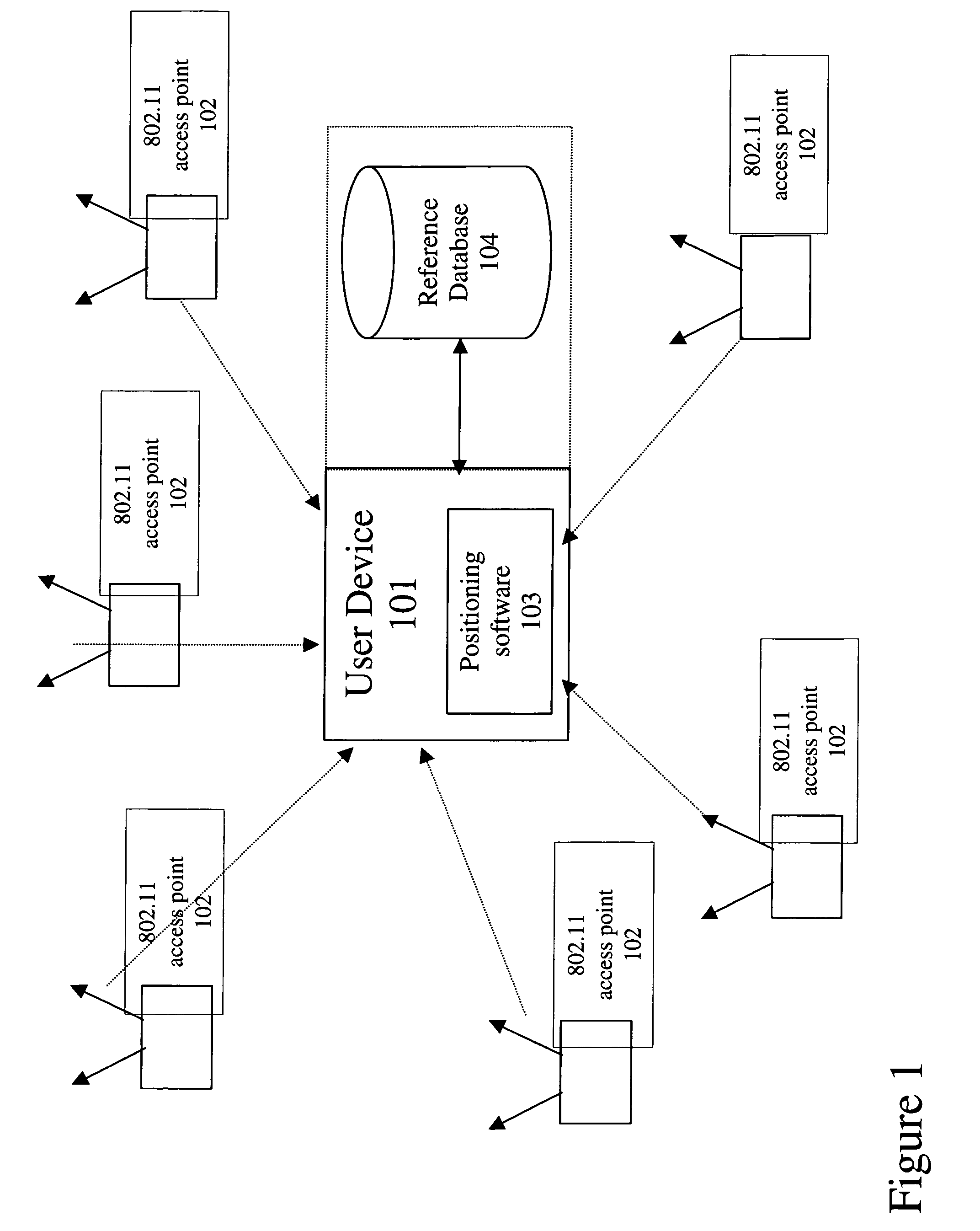Continuous data optimization of new access points in positioning systems
a positioning system and data optimization technology, applied in the field of location-based services, can solve problems such as suboptimal approaches, substantial errors, and confusion of receivers
- Summary
- Abstract
- Description
- Claims
- Application Information
AI Technical Summary
Benefits of technology
Problems solved by technology
Method used
Image
Examples
Embodiment Construction
[0040] Preferred embodiments of the present invention provide a system and a methodology for continuously maintaining and updating location data in a WiFi positioning system (WPS) using public and private 802.11 access points. Preferably, clients using location data gathered by the system use techniques to avoid erroneous data in determining the Wi-Fi positions and use newly-discovered position information to improve the quality of previously gathered and determined position information. Certain embodiments communicate with the central location Access Point Reference Database to provide the location of newly discovered access points. Other embodiments notify the central location Access Point Reference Database of access points whose readings fall outside the bounds of what should be expected, based on previous readings of their location. Access points whose readings fall outside of what should be expected can be marked as suspect and filtered out of the triangulation formula so as n...
PUM
 Login to View More
Login to View More Abstract
Description
Claims
Application Information
 Login to View More
Login to View More - R&D
- Intellectual Property
- Life Sciences
- Materials
- Tech Scout
- Unparalleled Data Quality
- Higher Quality Content
- 60% Fewer Hallucinations
Browse by: Latest US Patents, China's latest patents, Technical Efficacy Thesaurus, Application Domain, Technology Topic, Popular Technical Reports.
© 2025 PatSnap. All rights reserved.Legal|Privacy policy|Modern Slavery Act Transparency Statement|Sitemap|About US| Contact US: help@patsnap.com



